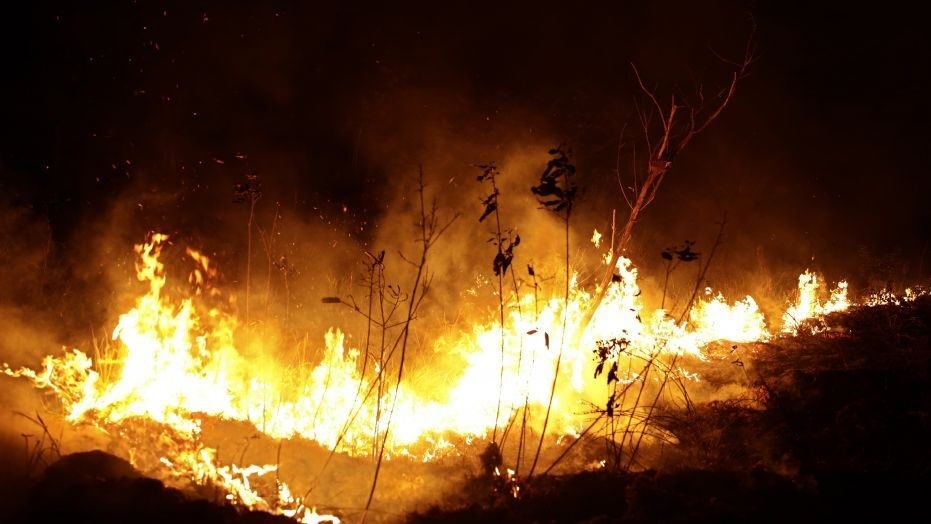Lungs Burning
| Date :22-Sep-2019 |

“People forget that these rainforests are lungs of the planet and they have a massive role in absorbing Co2 and releasing oxygen.”
“Forest fire also damages flora and fauna of jungles apart from posing peril to wildlife. Though it has not been established as to what exactly caused the fire, many believe it has been deliberately lit to clear land for cattle ranching. 70 per cent of deforestation in Amazon forests is indeed due to cattle ranching.”

FOREST fire is a global problem combating which is a headache for even the most technologically advanced countries. The recent case in point is the Amazon rainforest fire that is engulfing a huge section of the all-important forest area. The rain forest spreads in an area of 69 million sq km, i.e. a whopping 40 per cent of South America. The burning has affected 16,000 species of trees, i.e. 390 billion individual trees and 10 million different animal species.
And unfortunately, the last year has seen a record number of fires in the region. Compared to 2018, this year has seen an astounding 83 per cent rise in fires. Between January and August, over 72,000 fires have been reported in the jungles, which is the highest since 2013. In the past week alone, at least 9,500 fire incidents have been reported. What is a matter of utmost concern is this that each year, forest fire incidents are increasing or say that their number is more than the corresponding year. Whenever fire in the forest breaks out, it proves bane to the concerned forest as it not only burns down the age-old trees but also burns the otherwise fertile ground and breeding ground for dormant seeds buried inside the mud. When a fire takes place then seeds buried in the ground also got burnt. In other words, forest fire also damages flora and fauna of jungles apart from posing peril to wildlife.
Though it has not been established as to what exactly caused the fire, many believe it has been deliberately lit to clear land for cattle ranching. Seventy per cent of deforestation in Amazon forests is indeed due to cattle ranching. People forget that these rainforests are lungs of the planet and they have a massive role in absorbing Co2 and releasing oxygen. Certainly, Brazil, where the major portion of the forest exists, hasn’t done well to check fire and douse them in time. French President Emmanuel Macron took to Twitter to call for action, pushing for emergency international talks on the Amazon at the G7 summit. On August 26, the world’s seven largest economies offered Brazil more than $22 million in aid to help it get the fires under control. But Brazilian President Bolsonaro promptly turned down the money, accusing Macron on Twitter of treating Brazil like a colony. Some in Brazil, including Bolsonaro, see the international aid as an attack on Brazil’s sovereignty, and it is right to decide how to manage the land within its borders. However, on the 27th, Bolsonaro accepted $12.2 million in aid from the UK. Now more than 10,400 firefighters have been spread thin across 5.5 million square kilometers of the jungle fire if the Brazil Government is to be believed.
But no doubt much damage has already been wrought by the days of uncontrolled fire in the region. In India too, we have seen a spurt in forest fires in the last few years. There are multiple reasons as to how and why a forest fire ignites. One of them is certainly human interference or rather intrusion in the forest space and their neglectful or detrimental activities like burning trash or smoking and throwing away the smoldering butt carelessly which lead to fires. Indian summers are specifically dry and volatile where even the smallest spark can cause unprecedented damage to forestry. At times there is also the lightning bolt that strikes a tree and leads to fires. In dry forests, fire spreads fast through strewn dry leaves and dried tree branches. In summers all moisture and water bodies dry up which in turn makes it conducive for the ignition and spread of fires. Once a fire catches it is very difficult to tame it in quick time. The greatest problem is it is hard to locate a fire and reach it until it grows into big enough a burning cauldron to be tracked and noticed. By then, the damage is considerable.
In India, the incidents of human movement in forest areas are more widespread and frequent. Forests are under immense pressure from a growing human population that is fast exceeding its periphery and spilling out of its habitations into forestlands. Burgeoning human needs for space and natural resources is leading to constant exploitation and harnessing of forest resources. Somewhere the brunt has to be borne. This is growing as a global phenomenon. In India also, our forest staffers are inadequately armed, equipped and trained to ward off intruders and keep the forests safe. They are ill-paid, over-worked and under facilitated, which leaves our forests vulnerable and prone to illegal invasions. Another factor that plays the spoilsport is the lack of advanced technological wherewithal to stem a fire once it starts spreading. Due to lack of proper navigation and radar equipment, we first fail to pick the signals of a new fire once it starts.
Then once it is picked, we cannot marshal all our resources at one place and in quick time to materialise a coordinated and concerted action. Several departments need to come on the same page and work in unison, which hardly happens here. There is no immediate response team in place. There are permissions to be taken, files to be approved, bosses to be contacted and informed of the modalities, people to be engaged, duties to be distributed, legalities checked, only after which things start moving. Then there are holidays, leaves, offs, delays and derelictions associated with Government working. All this complicated work process and inter-department clashes cause valuable time loss and by the time we get our acts together, it is already too late to make much amends. This leads to the ominous proportions to which wildfires grow. We don’t have choppers ready and designated for the job to spread water or dousing materials from atop. By the way, more than technology, it is always the way of approach we adopt. Unless we set our response to disasters right, no amount of expensive equipment or machinery can make things happen. Human control and management are all.